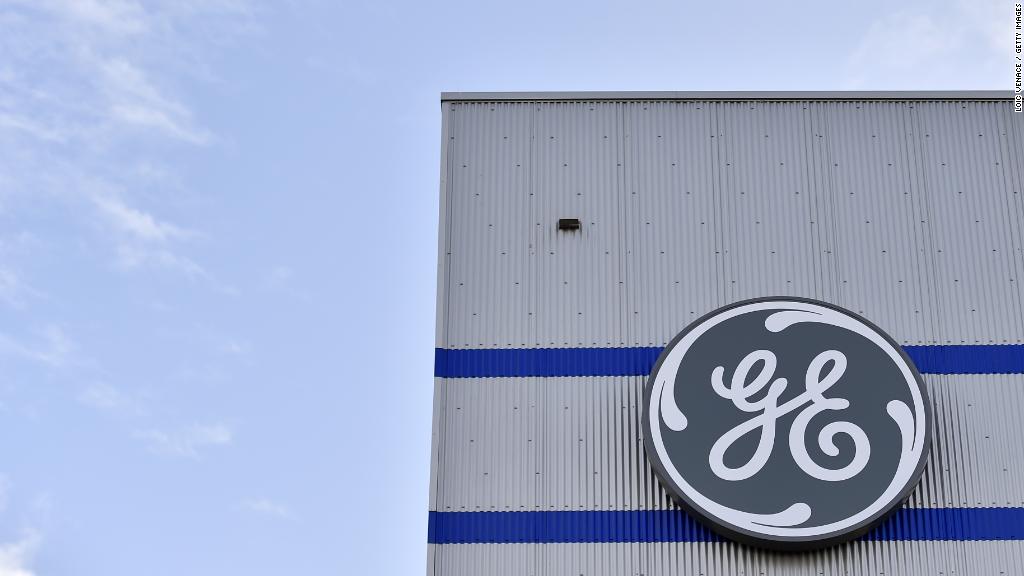
John Flannery is on a mission to clean up General Electric's debt mess by further shrinking the conglomerate's empire.
The GE CEO has promised to sell about $20 billion of businesses -- and use the proceeds to pay down debt. GE made progress on that goal on Monday by unloading GE Transportation, the 111-year-old rail division, in an $11 billion merger with rival Wabtech (WAB).
GE also recently agreed to sell a health-care business for $1 billion. GE has been trying to sell its iconic light-bulb unit for almost a year.
At first glance, this looks like a great way for GE to whittle down the $77 billion of total debt that Moody's estimates the embattled company is sitting on. GE will hold onto its core businesses -- aviation, healthcare and power -- and gets precious cash to pay down debt.
But Wall Street is getting worried that GE's moves may not be enough to preserve the company's beloved dividend, which was dramatically cut last year.
GE (GE) shares plunged 7% on Wednesday after Flannery at an industry conference declined to give a full-throated endorsement of keeping the dividend intact. It was GE's worst day since April 2009.
The problem is that GE's deals may actually add additional pressure to the company's ailing balance sheet.
Moody's warned in a report on Tuesday that the sale of the rail division is "credit negative" for GE. By getting rid of GE Transportation, the credit ratings firm estimates that GE will lose out on $450 million in annual free cash flow -- at a time when the company is badly hurting for cash.
In other words, GE will have less firepower to pay back debt.
Related: GE can't get rid of its light bulb business
And the tax-free structure of the rail deal limits the amount of cash that GE can use to pay down debt.
GE valued the complex deal at about $11 billion -- but most of that is in the form of stock going directly to shareholders. GE is initially only receiving $2.9 billion in cash in addition to a 9.9% stake in the combined company. All told, Moody's says GE will get about $5.4 billion for the rail division.
"We doubt that it will move the needle too much," RBC analyst Deane Dray wrote to clients.
Another problem: GE is still on the hook for the rail division's pension and retiree health liabilities. That means GE is losing out on the cash flows -- but holding onto the negatives.
GE has a massive pension shortfall of $28.7 billion, the highest in the S&P 500. GE reiterated on Wednesday that it plans to use debt to pay $6 billion into its pension plan in 2018.
The rail sale "highlights the risk" that a rush to sell businesses can have "considerable negative effects" on the company's earnings and cash flow, Moody's senior credit officer Rene Lipsch wrote.
This underscores the need, according to Moody's, for GE to offset the loss of cash flows by fixing the core business and paying down debt and pension liabilities.
But that may be easier said than done.
Related: GE's latest sale: Its 111-year-old rail business
Flannery, in a high-profile speech on Wednesday, reiterated a desire to "de-risk" GE by selling assets and shifting the company's mindset.
"We see a path forward to increasing our cash levels, decreasing our leverage," Flannery said at the Electrical Products Group Conference in Florida.
Yet GE Power, its largest division by revenue, is in a deep slump that's draining cash. Flannery warned that the power business will remain depressed in 2019 and 2020.
"This is not going to be a quick fix," Flannery said.
Asked if he could "stand behind" GE's 2019 dividend plan, Flannery made no promises and noted that the dividend is a function of free cash flow.
Wall Street's biggest GE skeptic, JPMorgan analyst C. Stephen Tusa Jr., warned in a report this week that GE's dividend may need another cut because the balance sheet is in worse shape than people realize.
While investors treated Flannery's asset sale plan as a "silver bullet," Tusa Jr. argued that GE is "clearly missing" the $20 billion target.
Worse, the JPMorgan analyst estimated GE may need much more money -- $32 billion -- to lower its aggressive leverage levels to back to safe territory.
The bottom line, Tusa Jr., wrote, is that there are still "shoes to drop" at GE.

